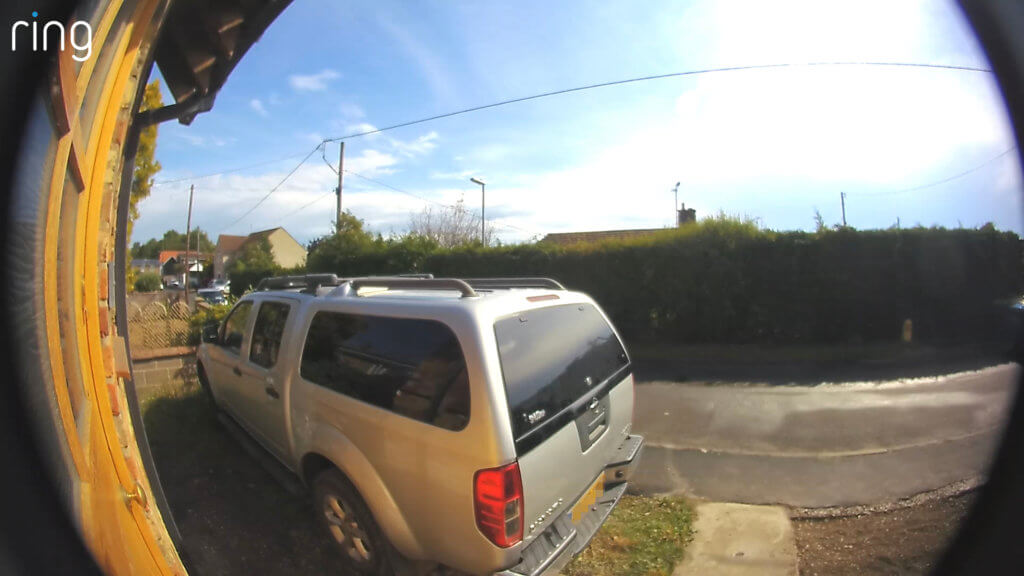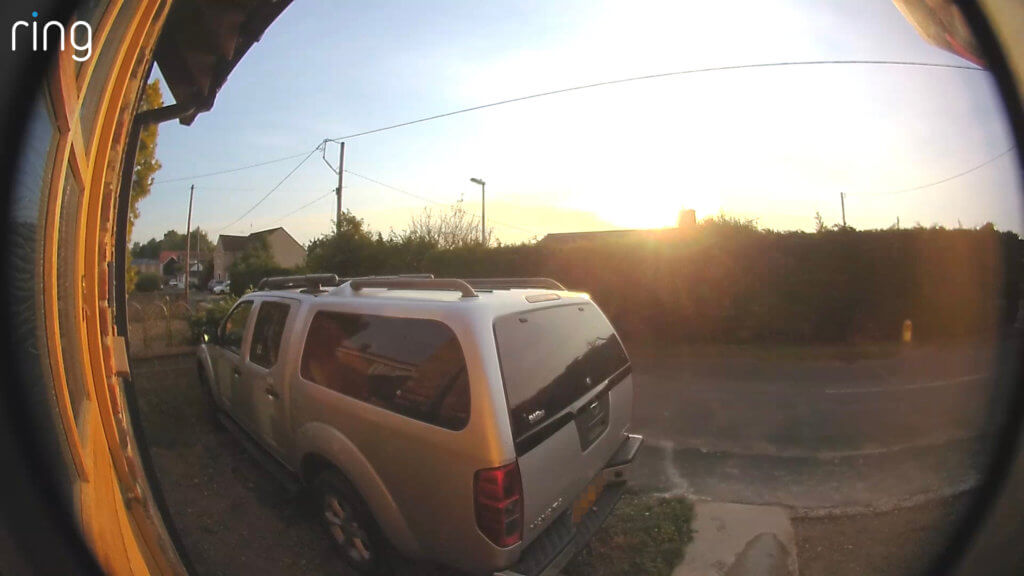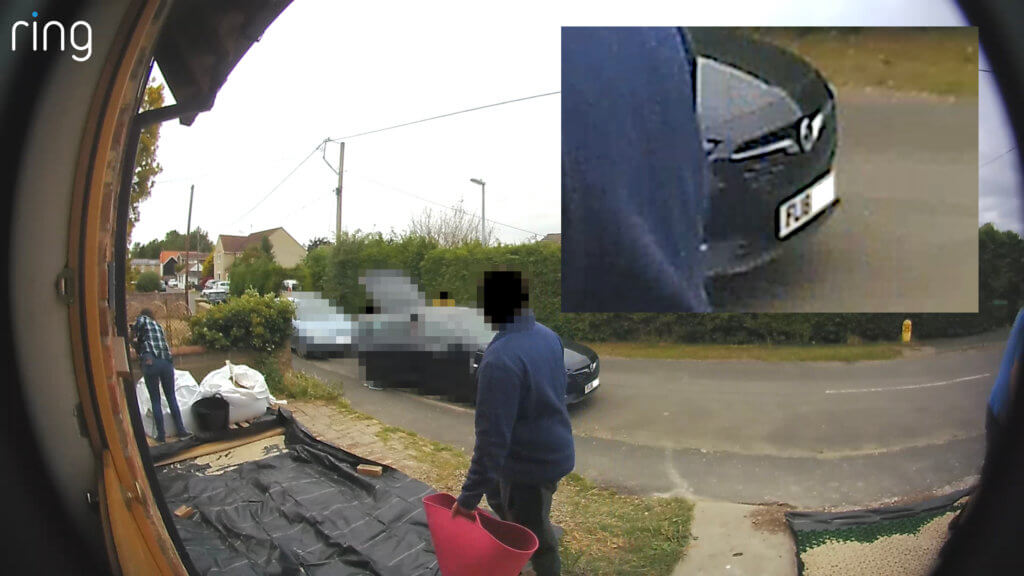Sadly it seems every day (most certainly correlated to the COVID-19 pandemic) there are more reports of crime in the villages surrounding where I live. Of particular concern for me, dog thefts.
A few years ago I was surprised by Mrs H’s interest when I floated the idea of a Ring Doorbell. (I will be clear up-front: this is in no way sponsored but the links to Amazon below will give me a small referral bonus if used.) After a typically excessive amount of research I settled on the Ring Doorbell Pro (Amazon link). Ring are only one of several providers (including Nest and Ubiquiti) – this post documents my personal experience with Ring and I’ll be mentioning why I would certainly consider Ubiquiti’s offering over Ring if I did it from scratch again.
Sideline note: if you’re not in a rush to buy any Ring kit, the company is now owned by Amazon and typically has very significant discounts during Amazon’s Prime Day events. That’s when we got ours, and we saved a pretty penny. The 2020 date is yet to be officially announced but is looking like the first week of October – later than was expected (due to COVID?).
My choosing of the Pro model came down to a couple of factors:
- I dislike batteries. Even rechargeable ones. They don’t last forever, so if I can avoid them – I do. The Pro is mains powered.
- It’s physically more discrete. +1 for aesthetics.
- Due to being mains-powered, it allegedly responds faster (due to the lack of batter power-saving mode) and has slightly more advanced motion detection.
That said I know plenty of folk with the Ring Doorbell 2 who have assured me it works great and the battery life is impressive, and Ring have also since released the Ring Doorbell 3 (which appears to reduce the feature gap further).
Installation was a breeze and with a little tweaking to the motion detection, it’s been a reliable security addition since the day it was switched on. Immediately we started getting real-time (literally within seconds) notifications to our phones about motion at our front door.
The angle of view is sufficiently wide to cover our front door and right around past the right of the path leading to the house. This covers not only where foot traffic should going on approach to our house, it also fully covers 2 sides of our Nissan Navara (not a small vehicle) when parked fully up at one end of the wide driveway. The camera works just as impressively at night (with IR lighting included) as it does the day and even with the sun shining directly at it (see shots below).
For meaningful security purposes, you’ll need to add Ring’s on-going subscription fee. It starts at £25 a year (discounted, else £2.50 a month) per doorbell/camera etc, or £80 a year for as-many-devices-as-you-like (discounted, else £8 a month). With the £80/yr package, you also receive 10% off purchases direct from Ring.com. Primarily for that money you’re renting video storage space with Ring. I’ll discuss my opinion on that at in a moment.
Subsequently with the increased reports of crime and Suffolk police constabulary advising installation of CCTV this week (July 2020), I bit the bullet and added several additional Ring cameras around our home. For obvious reasons, I’m not willing to share snapshots of what they see…
My experience with adding these was as with the doorbell. Installation was quick, slick, and (again I opted for the mains-powered cameras) they’ve been reliable so far. The cameras have a slightly different motion detection mechanism to the doorbell Pro, patience has been (and may yet be) required to get the “false” motion detections ironed out. As with the doorbell, all the cameras sync with the mobile app and upload captured footage to Ring’s servers.
In my opinion, there are two things Ring have gotten really right:
- Slickness, ease of use. The app is a beautiful example of how mobile apps should work. It’s intuitive, it’s clean, you can find what you want quickly (particularly when it’s 3am and you want to know why your garden floodlight just came on – and free-tip here, make sure you whitelist your security app from Apple/Androids “time limit” features first!)
- Ease of setup. I know, this only happens once, but again it’s a demonstration of how to do it right. It took me longer to fix the cameras in place physically than it did to connect them up with the app.
But there are a couple of points to be aware of.
- You’re locking yourself in.
As with all of these companies … once you start – you don’t want yet-another-app installed on your phone. Especially with the on-going monthly cost, if you have more than 3 devices – you want to benefit from Ring’s as-many-as-you-want pricing (and not start paying someone else alongside). - You’re at Ring’s mercy for service availability.
That £2.50 a month is a rental fee. You’re paying Ring to host your captured videos for 30 days. Stop paying, and you can’t upload new videos and any videos from the last 30 days get deleted.
And if Ring’s service is offline (which has happened in the past…), sorry. Expensive paperweights.
Now the flip-side of these points is “Ring have the responsibility to make it work”. Ring, now owned by Amazon, have the resources to keep the service online (and quickly fix it if needs be). Also, if someone did break into your house, they can’t steal the video footage. It’s being held by Ring.
So then the trade-off is really one of: “Long term cost” and “Trust of Amazon”. Personally, I don’t trust Amazon enough to have Alexa in my house. Personally I trust them enough to see what’s happening around the outside of my house.
Cost-wise, that’s the sticky point for me. From the day I bought the doorbell, I became so heavily bought into Ring that the cost of replacing the kit outweighs the on-going monthly cost (at least it does for 4-5 years). Which is why if I were doing this all-over from scratch (and am not an existing Nest customer for example), I’d seriously Ubiquiti’s UniFi Protect range instead.
My experience with Ubiquiti’s UniFi’s is nothing short of excellent. Like Ring, they’ve nailed the experience which you can read about elsewhere on my blog. UniFi now sell a couple of fully-integrated security options which, unlike Ring, have no on-going monthly cost. All your footage is stored on-premises (certainly a must for any camera inside my house) and doesn’t rely on someone else’s computer being operational to work. (Indeed, even if your home/work internet connection is severed, UniFi Protect should keep working just fine.)
You can read about UniFi’s security offerings on their website, but for a rough idea – here’s a demonstration breakdown:
- UniFi Cloud Key Gen 2 Plus (used to store the camera footage and control the cameras), ~£190 – you’ll need one of.
- UniFi G3 Flex camera (comparable spec to Ring’s), ~£75 each.
And that’s it. Ubuiqiti also sell cameras far exceeding Ring’s, with a price that matches (you’re heading up £200-£500 a camera for those), which might make sense depending on context. They’ve also launched a doorbell in the US (presumably will be available in the UK soon).
So the cost saving for UniFi comes as the Cloud Key (£190) saves £25-£80 a year depending on how many cameras you have. Assuming you have 3 or more cameras, the UniFi route should repay itself in a little over 2.5 years. And you’ve the added knowledge that the data is stored where you physically locate it.
Similarly Anker’s Eufy do a kit very comparable to Ubiquiti’s, which is currently selling on Amazon with discount vouchers at the following prices:
- Doorbell + chime, ~£152 (assuming 15% voucher applied)
- 2 cameras + storage/controller (like the UniFi kit, you’ll need one controller somewhere on your network), ~£184 (assuming 20% voucher applied)
Again, assuming 3 devices, you’d being saving over Ring by year 2.
Let me know what you have and what your experience has been – and as always, stay safe and keep your loved ones protected.


